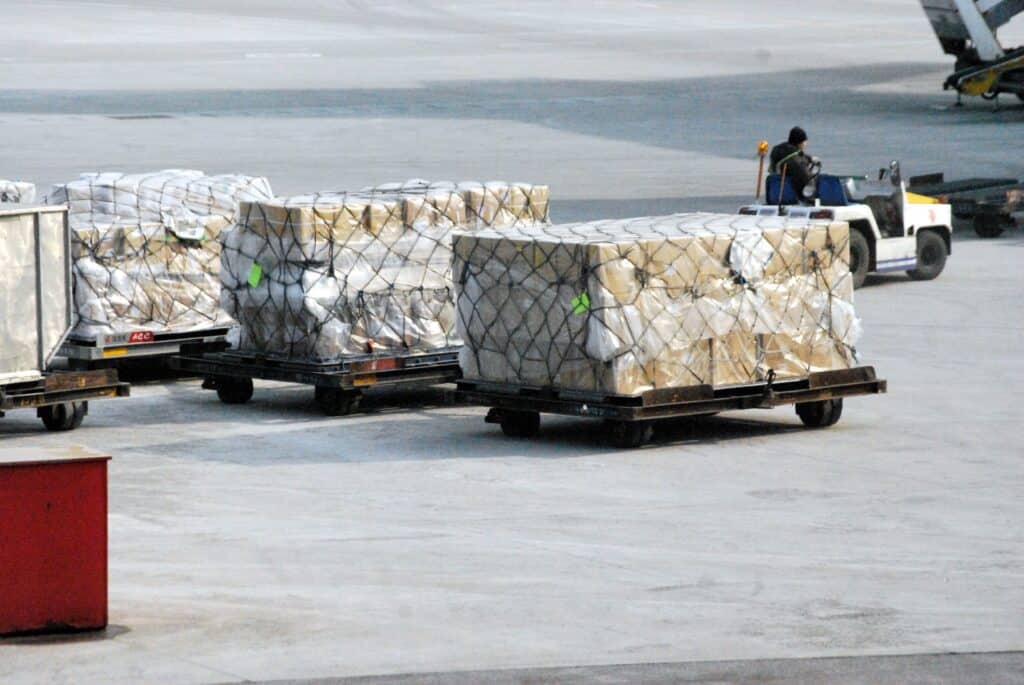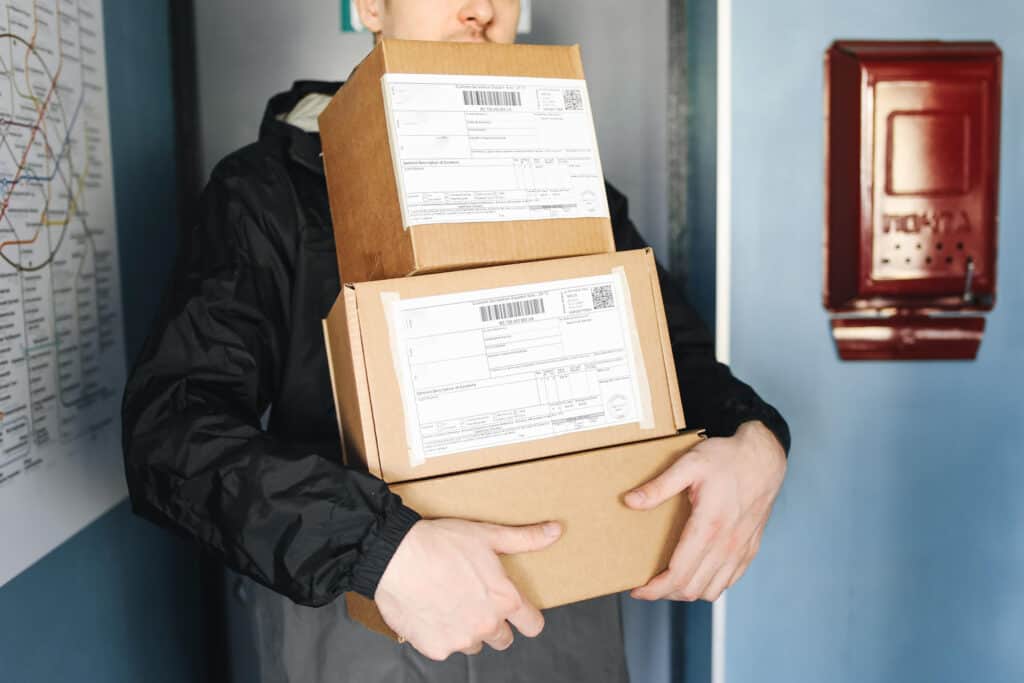
What is the Last-Mile Problem? Here’s How You Can Solve It

Wise Systems
What is the Last-Mile Problem? Here’s How You Can Solve It

Wise Systems

In the modern world, the last-mile problem is an unavoidable hurdle for businesses across the globe. Delivering hundreds, thousands, or tens of thousands of packages daily to residential addresses scattered across diverse geographic areas is a major logistical challenge.
This article aims to dissect the last-mile problem, laying bare the core components that make it a universal challenge. More importantly, it spotlights four promising solutions that tackle this complex issue head-on, suggesting potential pathways toward a more efficient and sustainable future for last-mile logistics and all the companies operating within this space.
In this article:
- What is the Last-Mile Problem?
- Solution 1: Electric Vehicles or Micro Mobility
- Solution 2: Invest in Advanced Route Optimization Software
- Solution 3: Explore Crowdsourcing
- Solution 4: Leverage Local Retailers and Locker Drop-offs
- How Route Optimization Can Help You Solve the Last-Mile Problem
- Frequently Asked Questions
What is the Last-Mile Problem?

Image by PublicDomainPictures from Pixabay
The last-mile problem, also known as the final-mile problem, is a problem of inefficiencies. Product moves in bulk during the first and middle mile of the supply chain.
Larger consignments are efficiently packed and dispatched together to the appropriate distribution warehouse. This collective movement significantly reduces logistics, labor, and fuel costs.
However, the scenario completely changes once these goods are segregated, repackaged, and dispatched from the distribution center in multiple delivery vans for the last mile.
- More Vehicles – Instead of tracking a single ship or semi-truck, the task now involves fueling, maintaining, and coordinating numerous smaller delivery vans.
- More Routes – Instead of following a predetermined route to a fulfillment center, each van is assigned to a different set of residential or business addresses, which changes the routing for each day.
- More Labor – Instead of employing a handful of commercial delivery drivers, businesses now require a fleet of local drivers to meet fluctuating demand.
- More Stops – Instead of making a single stop, delivery vans make many stops, most of which involve only a handful of parcels.
In essence, the last mile magnifies the complexities of logistics, amplifying costs, and operational challenges. Addressing the last-mile problem is about finding paths to streamline, simplify, and optimize the delivery process across these four areas – vehicles, routing, labor, and stops.
Solution 1: Electric Vehicles or Micro Mobility
The future of last-mile delivery is green. Electric vehicles, with their lower operating costs and zero emissions, may change the game for the delivery industry.
Companies like Rivian are already partnering with Amazon to roll out a fleet of 100,000 electric delivery vans by 2030. However, Rivian is looking to end the exclusive agreement to branch out to other retailers.
EVs eliminate the need for frequent gas station stops, thereby streamlining delivery timelines. Simply plug them in at the end of the workday, and they’re ready to hit the road again by morning.
While EVs won’t directly impact the number of vehicles needed to serve a certain area, they reduce costs and logistics hurdles associated with gas-powered vehicles.
Micro-mobility solutions, such as e-bikes and e-scooters, pose a cost-effective and environmentally friendly alternative for small parcel delivery in urban areas.
Solution 2: Invest in Advanced Route Optimization Software
The world is a complex maze of cities, suburbs, and rural areas, each with its unique layout, traffic patterns, and logistical challenges. Navigating this maze efficiently is a key part of solving the last-mile problem, and that’s where advanced route optimization software comes into play.
Route optimization takes into account the unique characteristics of each area. It considers many variables, such as real-time traffic data, weather conditions, road restrictions, and planned delivery winds.
Moreover, advanced route optimization software is dynamic. It can adapt readily to changes, recalculating routes daily based on new orders, customer cancellations, or unexpected traffic incidents. This level of adaptability is crucial in today’s on-demand delivery culture.
Solution 3: Explore Crowdsourcing

Image by romeosessions from Pixabay
A new and innovative solution to the bloated labor costs of last-mile delivery has emerged thanks to the gig economy – crowdshipping or crowdsourcing.
Imagine a college student who wraps up their classes for the day and has a few spare hours. Using a crowdsourcing app, they pick up a couple of packages from a nearby distribution center and deliver them en route to their home.
The retailer saves on delivery and labor costs, the student earns extra cash, and the customer gets their package faster. It’s a win-win-win scenario.
Crowdshipping capitalizes on everyday people’s existing resources and routines to facilitate last-mile delivery. It’s the Uber model but for parcels. This delivery model is particularly effective in urban areas, where population density is high, and potential couriers are plentiful.
Solution 4: Leverage Local Retailers and Locker Drop-offs
By leveraging local retailers and locker drop-offs, businesses can transform the final mile from a series of small, inefficient drops into a few more significant drops at key locations.
With their extended opening hours and strategic locations, local retailers are ideal pick-up points. They are happy to collaborate because of the increased foot traffic to their stores, and customers appreciate the convenience and flexibility. Locker drop-offs, on the other hand, offer a 24/7 no-contact solution and can be placed in various locations, from shopping malls to residential buildings.
Amazon has already implemented this strategy with its Amazon Locker service, and many other companies are following suit.
How Route Optimization Can Help You Solve the Last-Mile Problem
The last-mile problem is a complex issue with no one-size-fits-all solution. Each business and retailer grapples with unique logistics challenges during the last-mile phase.
However, the common thread is the inefficiency of the traditional delivery model. The key to navigating this issue lies in a willingness to embrace new technologies and delivery models.
If your business is looking to tackle the final-mile problem, investing in advanced route optimization software could be the game-changer you need.
Wise Systems, with its advanced delivery automation platform and Dynamic Optimization Engine (DOE) powered by AI, offer cutting-edge tools to optimize delivery routes and respond dynamically to changing conditions.
Request a demo to learn how Wise Systems can help your business execute a data-backed routing strategy with real-time visibility and helpful visualizations.
Frequently Asked Questions
What is the last-mile concept?
The last-mile concept in delivery refers to the final stage in the logistics chain where a package or product is transported from a distribution hub or warehouse to its final destination, typically the customer’s address.
It’s often the most complex and costly part of the delivery process, as it requires managing multiple variables such as traffic, route planning, and customer availability to ensure successful delivery. These challenges are collectively known as the last-mile problem.
What is the failure rate of last-mile delivery?
According to TechTarget, Accenture’s “The Sustainable Last Mile Report” reports that five to ten percent (5% – 10%) of last-mile deliveries fail on the first attempt. In its “Fixing Failed Deliveries” report, Loqate reports that five percent (5%) of online orders never make it to the customer at all.
Why is last-mile delivery inefficient?
Last-mile delivery can be inefficient due to a number of factors. These include:
- Unpredictable traffic congestion
- Difficulty in finding the delivery address
- The customer isn’t home to receive the package
- Lack of optimized routes
Additionally, the need to make multiple deliveries to different locations, often with low drop density, increases the time and cost of deliveries. Also, factors such as returns, redeliveries, and servicing rural or remote areas further contribute to the last-mile problem.
Why is last-mile delivery so expensive?
Last-mile delivery is the most expensive part of the shipping process due to several factors, including:
- Fuel costs
- Vehicle maintenance costs
- Driver wages
Inefficiencies also contribute to the high cost of last-mile delivery. These can include challenges such as:
- Low drop density
- Traffic congestion
- Failed deliveries requiring multiple delivery attempts
Additionally, the increasing consumer demand for faster (same-day or next-day) deliveries also adds to the cost of last-mile delivery.

